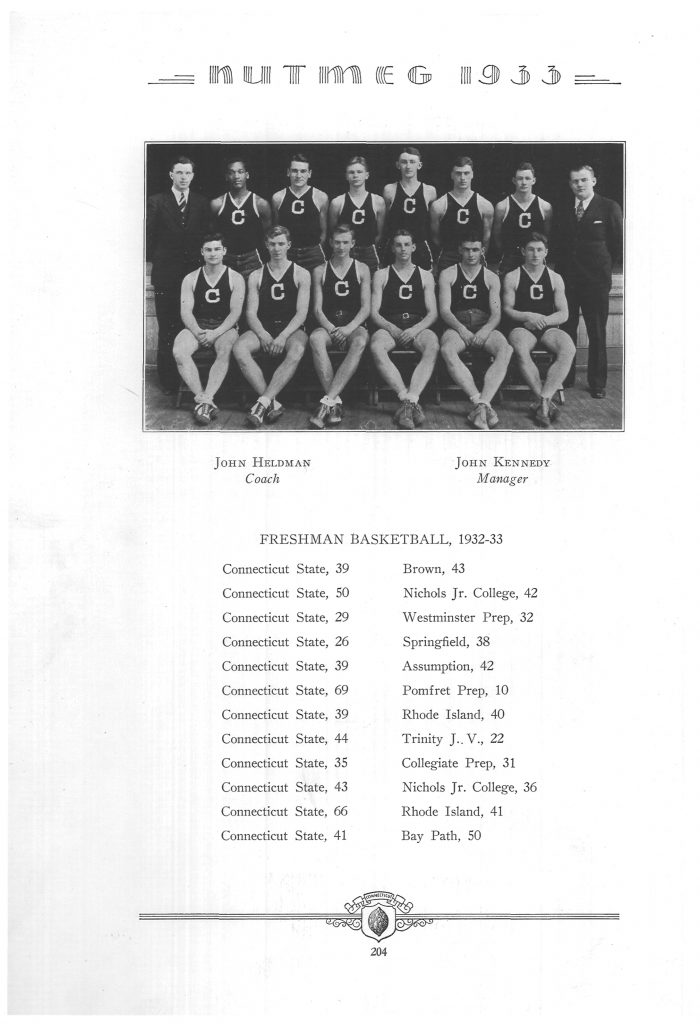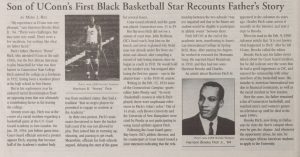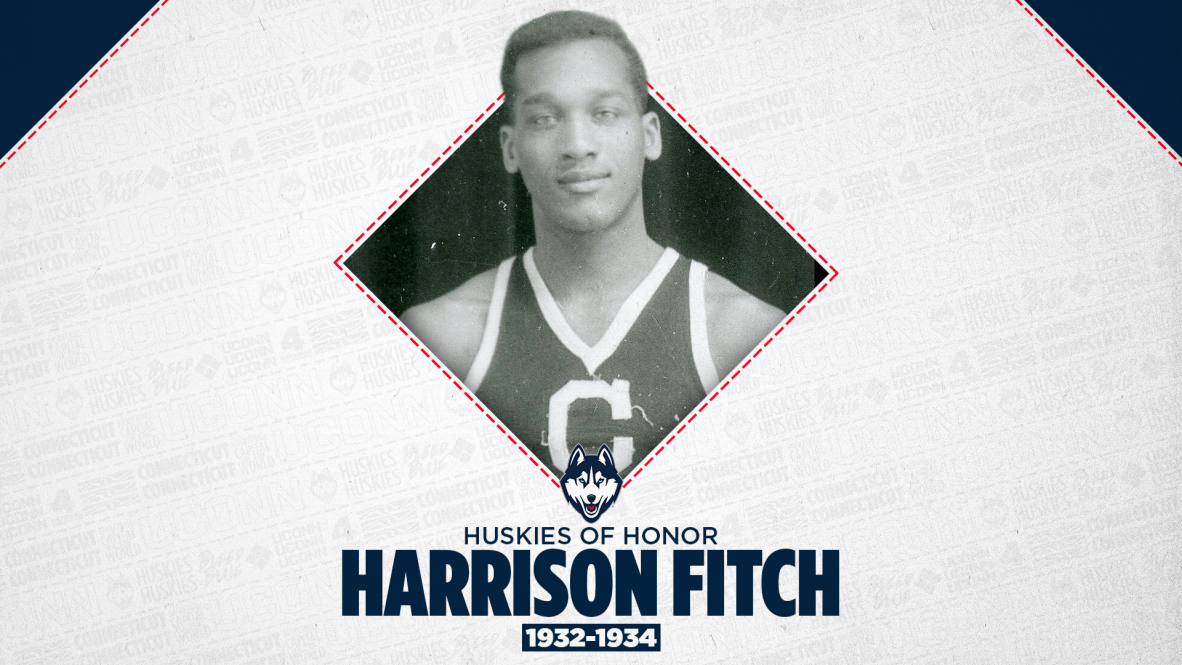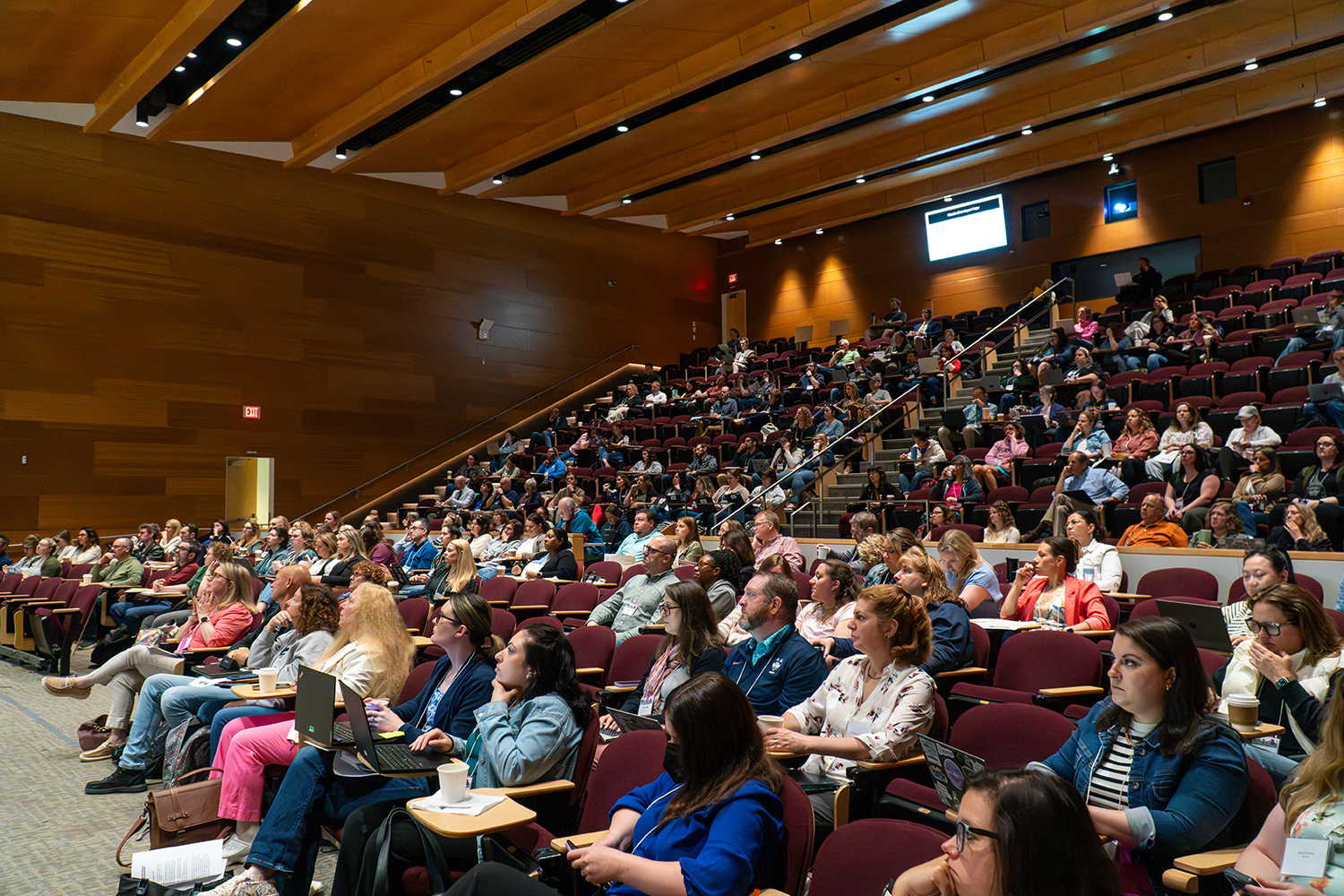Before Jesse Owens won four gold medals for the United States in his groundbreaking performance at the 1936 Berlin Olympics.
Before Jackie Robinson broke through the color barrier in Major League Baseball.
Before the landmark case of Brown v. Board of Education found racial segregation in public schools unconstitutional, and long before the Civil Rights Act of 1964.
Before UConn was called UConn, when the beloved Huskies were still the Aggies, and well before UConn became known as the academic and athletic powerhouse of today, a young man and three-sport star athlete from New Haven named Harrison Brooks Fitch enrolled at the Connecticut State College.
Fitch could hardly have known that his would become the story of a UConn trailblazer and the university community that rallied behind him in a way that was almost unheard of in the 1930s.
On February 19, 2022, the University will memorialize Fitch and his story by inducting him posthumously into the Huskies of Honor, where he will take his rightful place amongst Husky basketball greats like Ray Allen, Kemba Walker, Sue Bird, Diana Taurasi, Maya Moore, and coaches Geno Auriemma and Jim Calhoun.
‘The Right Person at the Right Time’
“The story is about Harrison Fitch, and his character, but also about the students at University of Connecticut, or Connecticut State at the time, how they stepped up,” says Fitch’s son and UConn alum Harrison Brooks Fitch, Jr. ’64 (CLAS), who goes by the middle name Brooks. “It was a very, very good story at a very challenging time.”

It was 1932, and Fitch had been a standout player at New Haven’s Hillhouse High School, excelling at guard on the basketball court, as first baseman on the baseball field, and at end in football. His athleticism earned him the nickname “Honey” Fitch for just how smooth he played.
When Fitch enrolled at what was then Connecticut State College, the school hosted only about 700 undergraduates in its entire student body, but only one of them – Harrison Brooks “Honey” Fitch – was Black.
He was the first Black basketball player in the University’s history, and Fitch was enormously popular with both his teammates and his peers at the school. He was voted best athlete by the student body in 1933 after playing on the football team and the freshman basketball team in his first year, and also made the varsity basketball team as a sophomore in 1933.
The college community’s embrace of Fitch was remarkable, explains Jeffrey O.G. Ogbar – a professor of history with the College of Liberal Arts and Sciences who studies the 20th century United States, with a focus on African American history – because of how systemic segregationist policies were in the United States at the time.
“In the South, every single flagship university refused to admit students based on merit alone,” says Ogbar. “One had to be white. All professional sports, and even the U.S. military, were segregated. That UConn admitted Fitch and played him is one thing. But that he won accolades, and critical support, from his peers on and off the team is significant.”
“He had a high level of character, a state of dignity about himself, and also a high level of strength and perseverance – those were the key components that were critical for his being able to endure what he endured in 1932 and 1934,” Brooks Fitch says. “So, he was prepared in terms of not just being an athlete, but having the character and the perseverance and the dignity to really make it through.”
Fitch was voted favorite athlete in the state of Connecticut in 1933 and was named best athlete on campus for a second time in 1934. But for all of the support he felt in Storrs, the opposite was true when it came to other teams.
Fitch regularly faced racist harassment and abuse from rival teams – their players, coaches, and fans. He endured it all with the support of his teammates, and with an unwavering personal grace, Brooks Fitch explains, because of who he was.
“He really was the right person at the right time,” he says. “It had to be more than his athletic ability, because everyone knew what he would be subjected to. Now, as it turns out, Connecticut State, UConn, was very, very receptive. But every time he went anywhere beyond the borders of UConn, it was totally different. So, he had to have the right character, the dignity, and the perseverance, just like Jackie Robinson.”
Robinson, the famed professional baseball player – who became the first African American to play Major League Baseball 15 years after Fitch debuted at UConn – was revered for not only his skills on the ballfield but also for his character, his use of nonviolence, and his contributions to the civil rights movement.
Fitch inherited those similar qualities, Brooks Fitch said, from his grandfather, the revered freedman William Henry Singleton.
“He was a former slave,” says Brooks Fitch. “He escaped seven times. He recruited 1,000 troops for the Union Army. He was recognized and acknowledged by Abraham Lincoln, and he shared with my father, as he did others, the importance of the qualities that we are talking about. So, he provided an aspirational, inspirational model for my father, certainly, just as my father has done that for us coming on after him.”
Those qualities inherent in Fitch – and the character of the entire UConn community – would be enormously tested on January 27, 1934.
‘The Students Stood Up’
The Connecticut State men’s basketball team traveled to New London, Connecticut, to play the U.S. Coast Guard Academy team on Saturday, January 27, 1934, and Fitch joined his teammates in uniform to practice and warm up on the court.
Just before the game began, officials from the Coast Guard Academy refused to play Connecticut State with Fitch participating. Around half of the academy’s cadets were from the segregated South, they said, and officials claimed that their athletes had never played against a rival team featuring a Black player.
“It was only after the team had dressed and were ready to go on the floor that the State team was told that Harry [Fitch] would not be allowed to participate in the game,“ wrote Jules Pinsky in the Connecticut Campus newspaper on February 13, 1934. “Then ensued a lively argument in which the Connecticut coaches, the athletic director, and players joined in.”
The game was delayed an hour while the teams argued over Fitch’s participation. At one point, the boxing coach from the University of New Hampshire – who earlier that same day had one of his students barred from competing in a boxing match against a Coast Guard Academy athlete because the student was African American – entered the locker rooms to express his support for Fitch.
When the players from Connecticut State finally took to the court, they did so believing that Fitch would be playing in the game. But instead, Coach John Heldman chose not to start Fitch and kept him on the bench for the entire game without explanation.
“It was a hard, rough contest in which fouls were plentiful and feelings ran high,” the Hartford Courant wrote at the time.
At the final buzzer, Connecticut State won the game by two points. The team returned to Storrs and to a campus community in outrage over the events in New London.
The next day, the athletic directors for both teams issued a joint statement calling the events “an unfortunate misunderstanding” and announcing an agreement that Black students would not be excluded from play in any future contests between the two teams. The statement rang hollow to a campus community that believed the Connecticut State coaches should have all-together refused to play the game without Fitch.
“When you look at the times, it was all about what you can do to make something happen,” says Brooks Fitch, “and the students rallied around him in the time of crisis.”
Students widely protested Connecticut State’s response to the event, calling it inadequate.
In early March 1934, the basketball captain Connie Donahue, who later went on to coach basketball at Torrington High School in Connecticut, led a student senate committee to survey students on the state of athletics at UConn. The student body voted overwhelmingly to fire Coach Heldman, who resigned the following year, and also to fire the athletic director, who ultimately left the University in 1936.
“It was particularly significant because it was a collaborative initiative – the students stood up,” Brooks Fitch says. “That was not done in 1934. You just did not see those kinds of things happening. So, it was very significant for my father and our family, and it was certainly significant for the African American community, because that spoke volumes, and was significant for the white students in that they were a part of it. It was a collaborative effort. It was a protest in the grandest scale.”
The controversy made state and national headlines, with Congressman Oscar S. De Priest of Illinois, the only Black member of Congress at the time, publicly condemning Fitch’s exclusion as “un-American.”
“This went national within seven days of the incident, which was very interesting,” says Brooks Fitch. “Today, everything is instant – everything is real, it’s alive, if you will. But within seven days, this story went national.”

“I am a historian who is very familiar with the ugly history of racial oppression in every corner of this country,” says Ogbar. “I was not surprised to learn of the taunts, jeers, and profane calls directed at Fitch during games. I was not surprised to learn that the Coast Guard Academy—which was explicitly hostile to racial equality—refused to play against an integrated team. I was, however, truly surprised that an exclusively white student body in the early 1930s supported and rallied around a Black classmate.”
Ogbar continues, “The practice of physically attacking, ostracizing, hating, taunting, or otherwise harming someone stems from people being raised in a particular system of values that, today, we widely consider unethical and immoral. Connecticut State College students were not raised in isolation from the wider society, but, somehow, were willing to resist its dominant impulse to ostracize and discriminate. There are all sorts of obvious clichés about treating people right, but these students from the 1930s led by example.”
At the end of the 1934 spring semester, Harrison “Honey” Fitch left Connecticut State College, transferring to American International College in Springfield, Massachusetts, where he also played basketball until he graduated. He went on to play football for the professional Boston Shamrocks team and, in 1938, signed with the Walcos football team in Wallingford, Connecticut.
He later became a researcher for the agrochemical and agricultural biotechnology corporation Monsanto. He married, had four children, and was active with youth groups and as a basketball referee.
Fitch passed away in June 1984 in Wallingford. He was 72 years old. Throughout his life, he remained a fan of the University of Connecticut, returning to Storrs to see his son graduate in 1964.
“He was very proud, and I am extremely proud, of UConn now, in particular when you look at not just the athletes, but also what they are doing as leaders,” says Brooks Fitch. “It’s all about contribution. Your contribution on the court, or wherever it might be as an athlete, is very, very important. But the real test is what you do off the court as well. It’s your contribution that you make to others around you and to life.”
A Husky of Honor
“The name [Harrison “Honey” Fitch] is not as well known in Husky annals as it should be during Black History Month in a time of heightened awareness of the pursuit of social justice,” wrote the Hartford Courant’s Dom Amore in a column published last February.
That will change on February 19, when Harrison Brooks “Honey” Fitch is inducted into the Huskies of Honor during the UConn Men’s Basketball home game versus Xavier at Gampel Pavilion in Storrs.
Members of Fitch’s family – including Brooks Fitch, who currently resides in Massachusetts – will be joining the UConn community as it recognizes Fitch’s accomplishments and contributions to the ongoing mission of equity and inclusion at UConn.
“We are thrilled to welcome the Fitch family back to Storrs to celebrate the enduring legacy of Harrison Fitch,” UConn director of athletics David Benedict says. “Harrison Fitch is a hero and, while his bravery may have revealed the worst in some, it helped bring out the best in most, especially within a University community that rallied around him during his time in Storrs.”
The Huskies of Honor program was instituted during the 2006-07 season and pays visible tribute in Gampel Pavilion to the top student-athletes, coaches, and contributors in UConn men’s and women’s basketball history.
“No one is more deserving of a place in our Huskies of Honor,” says Benedict of Fitch, “as his courage and undaunted spirit helped create an environment that has provided generations of young men and women with the opportunity to reach their potential at our University.”
The recognition, says Ogbar, celebrates the best of UConn’s sports history.
“It simultaneously underscores the forward-leaning wider University community on matters of social justice, sportsmanship, and character,” Ogbar says. “Fitch had a clear strength of character and talent that was broadly admired. His peers did not deny it; they celebrated it. I can’t explain how this came to be, but it is admirable. It speaks to the character and values of the student body in the best ways.”
It’s also recognition that his son says would have made Harrison “Honey” Fitch proud.
“He would have been very, very honored and proud to have been part of the legacy and, if you will, the DNA of UConn,” says Brooks Fitch, “because 1934 – that kind of established the DNA of UConn. That was unique, and special, and great.”



